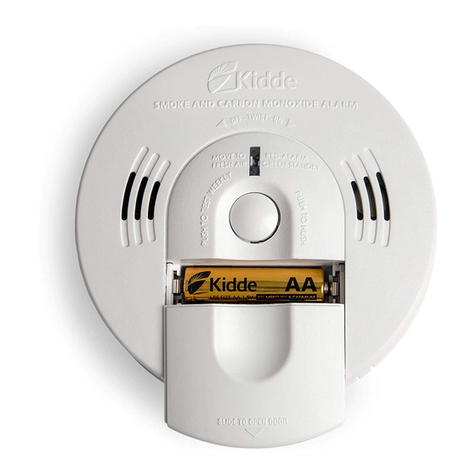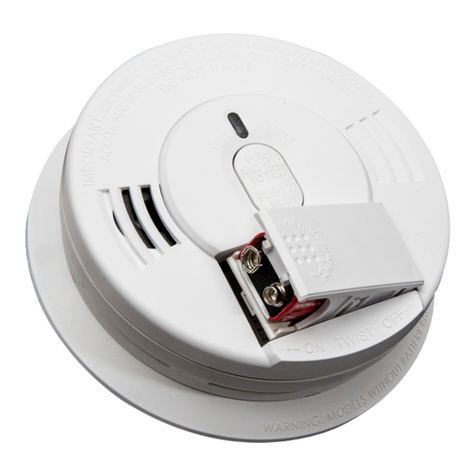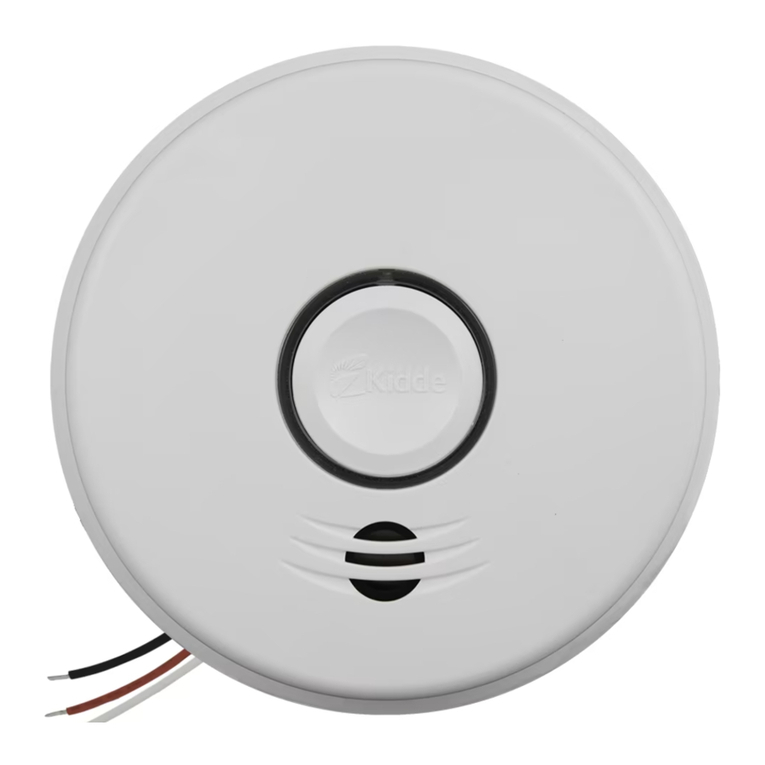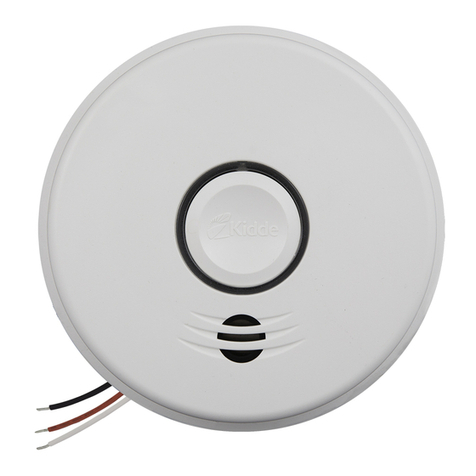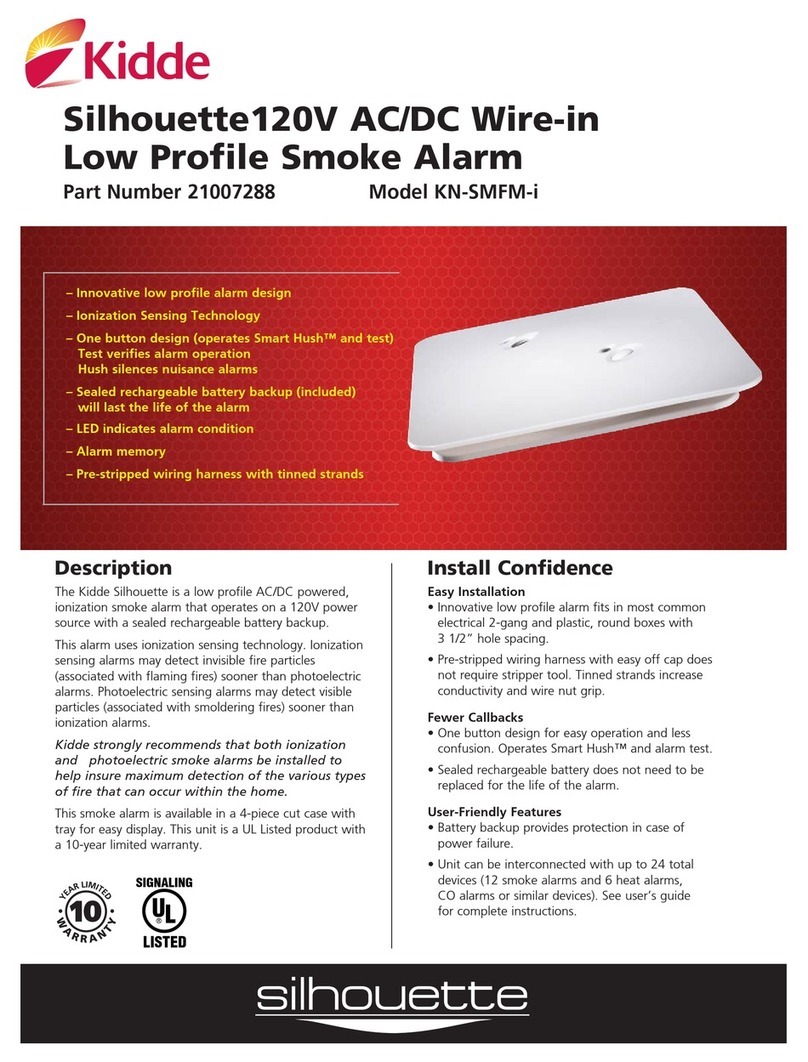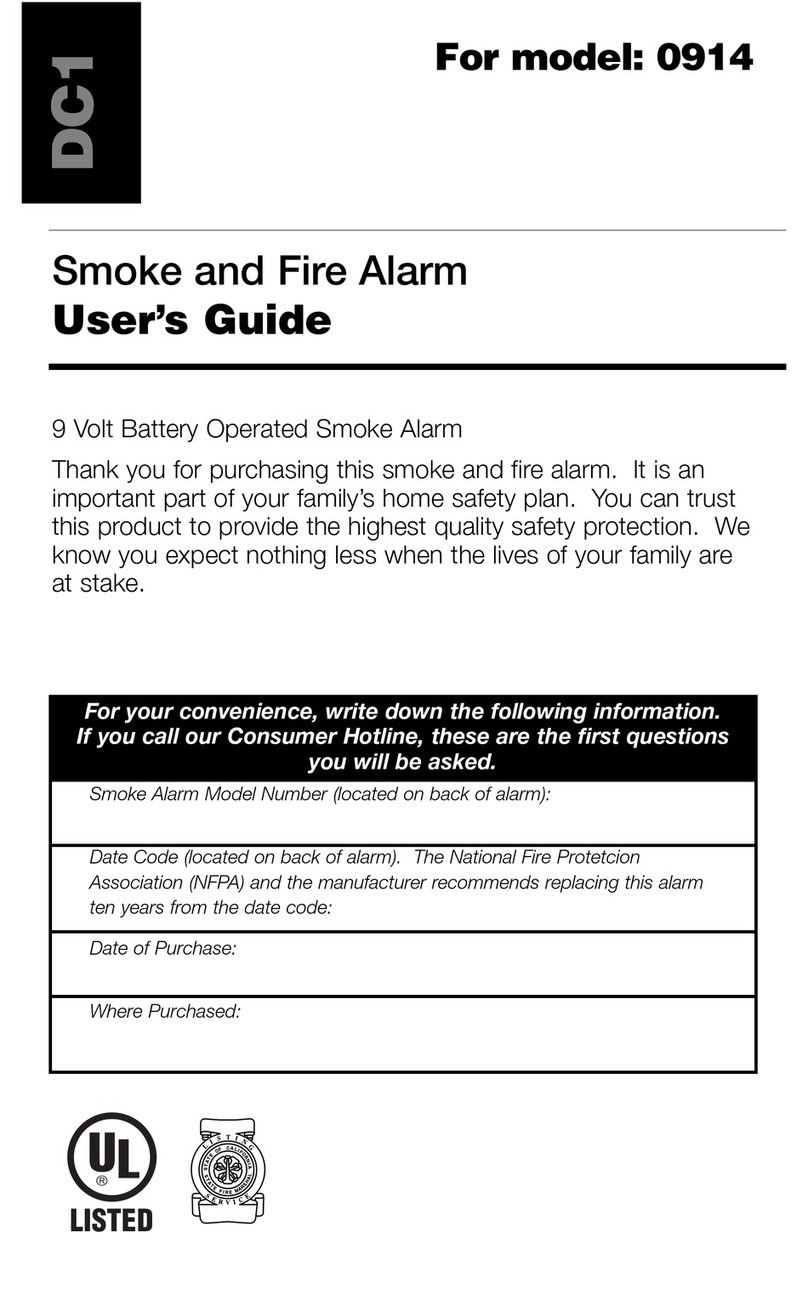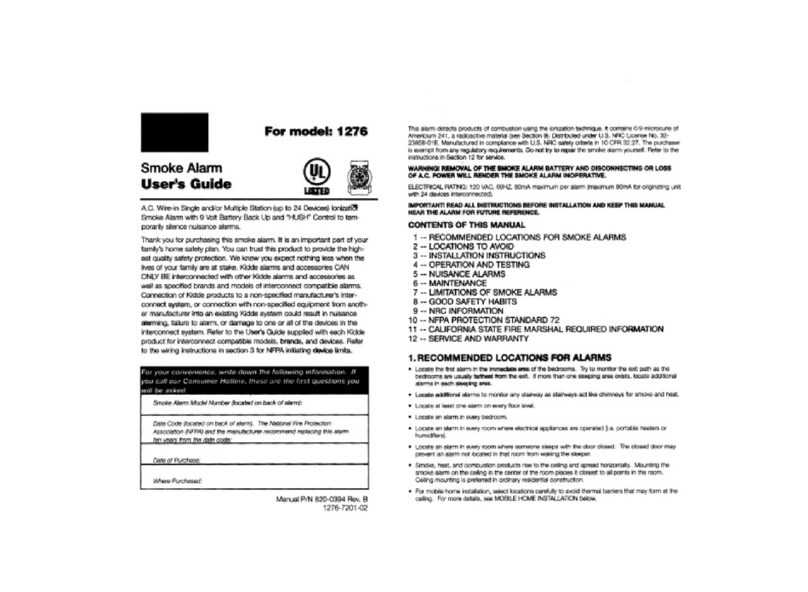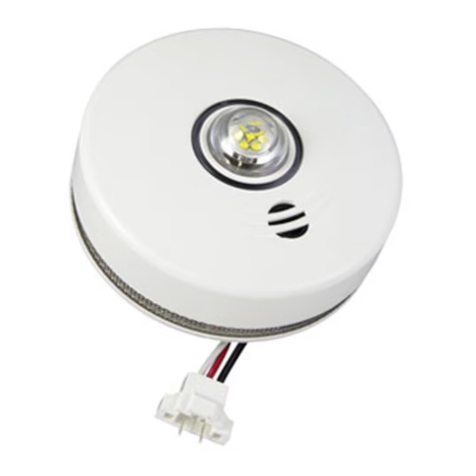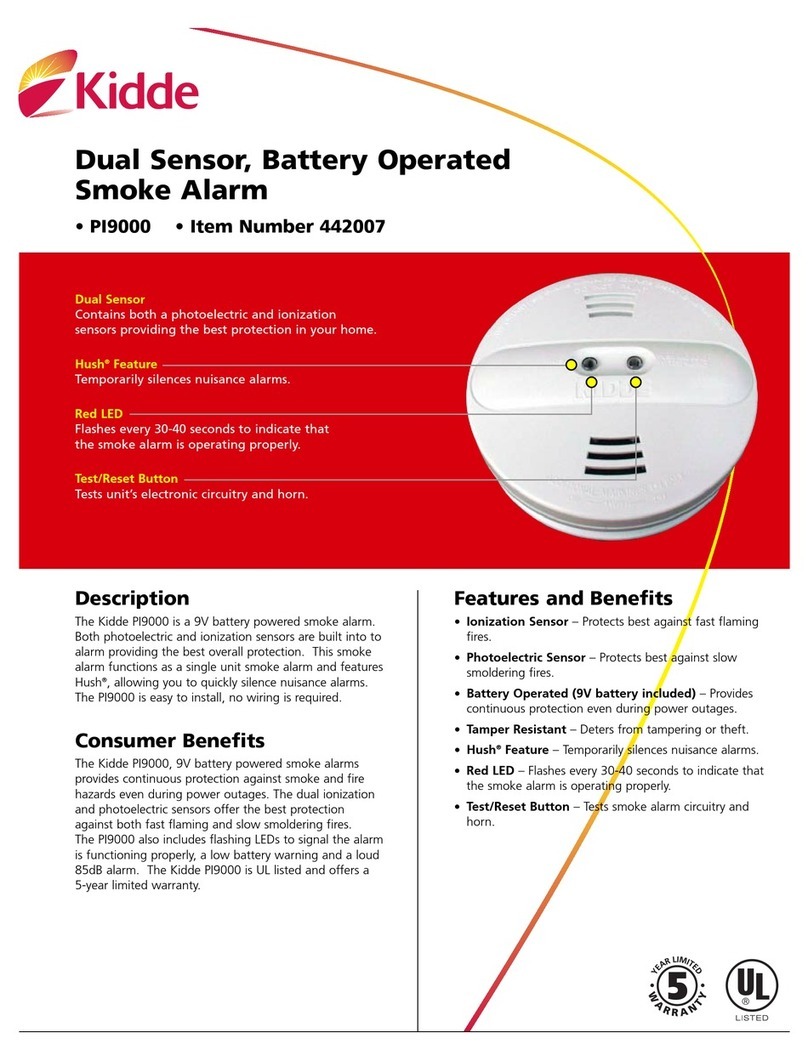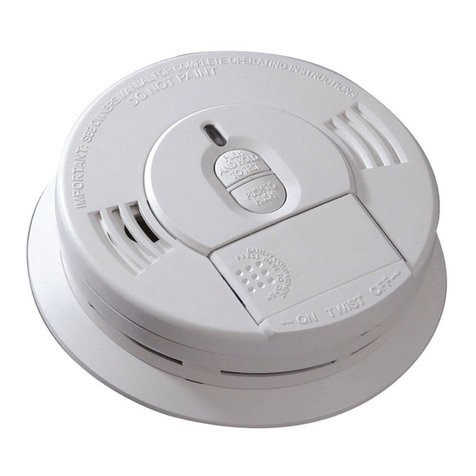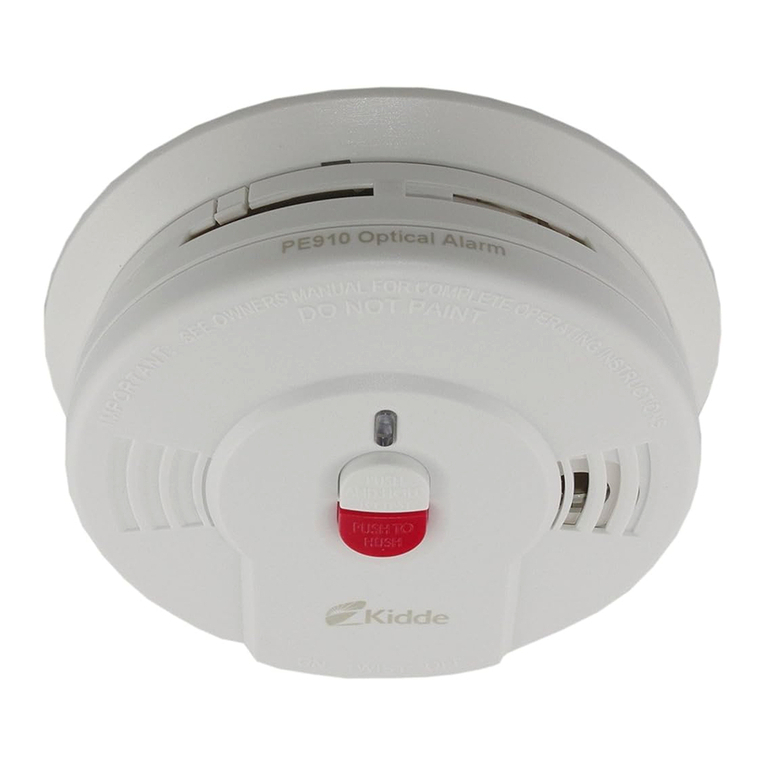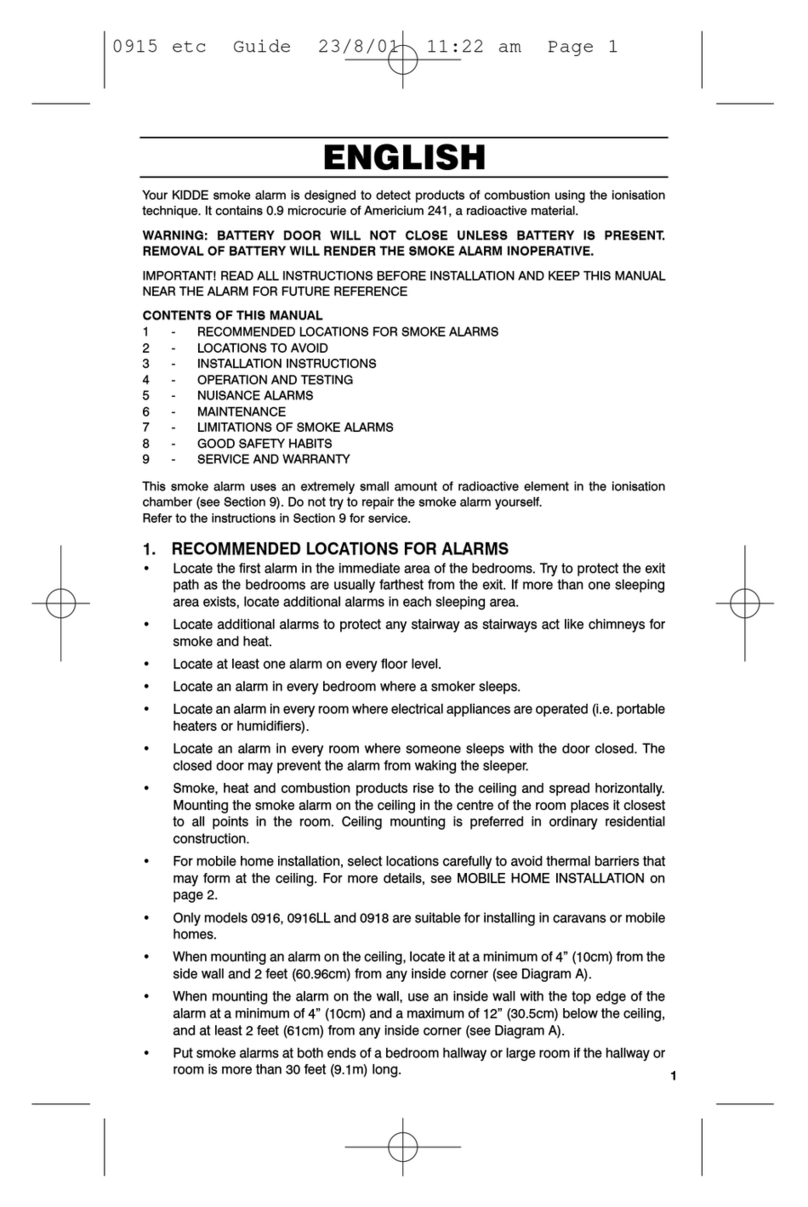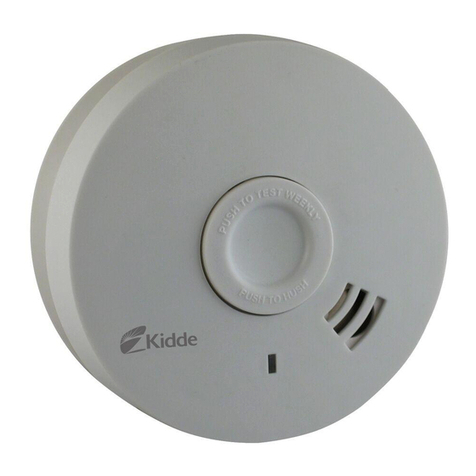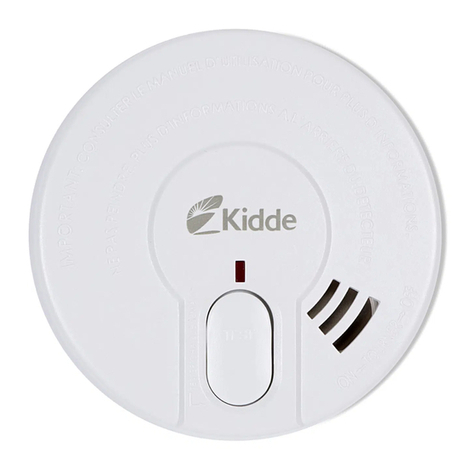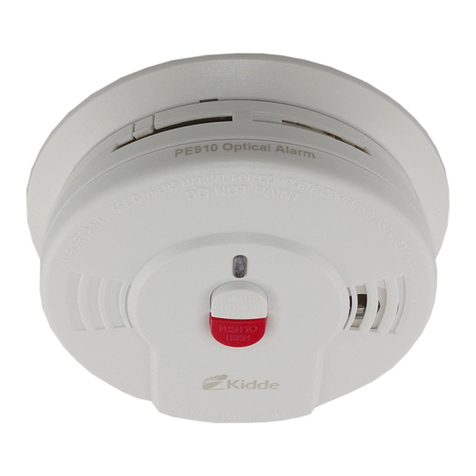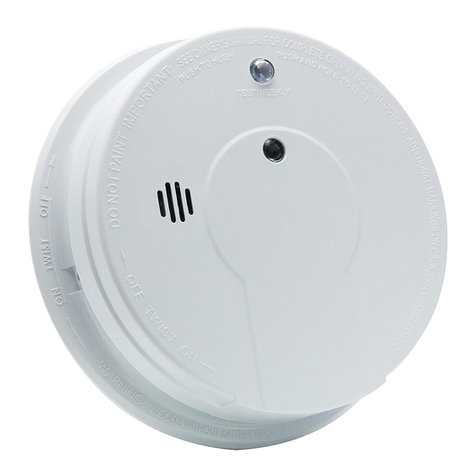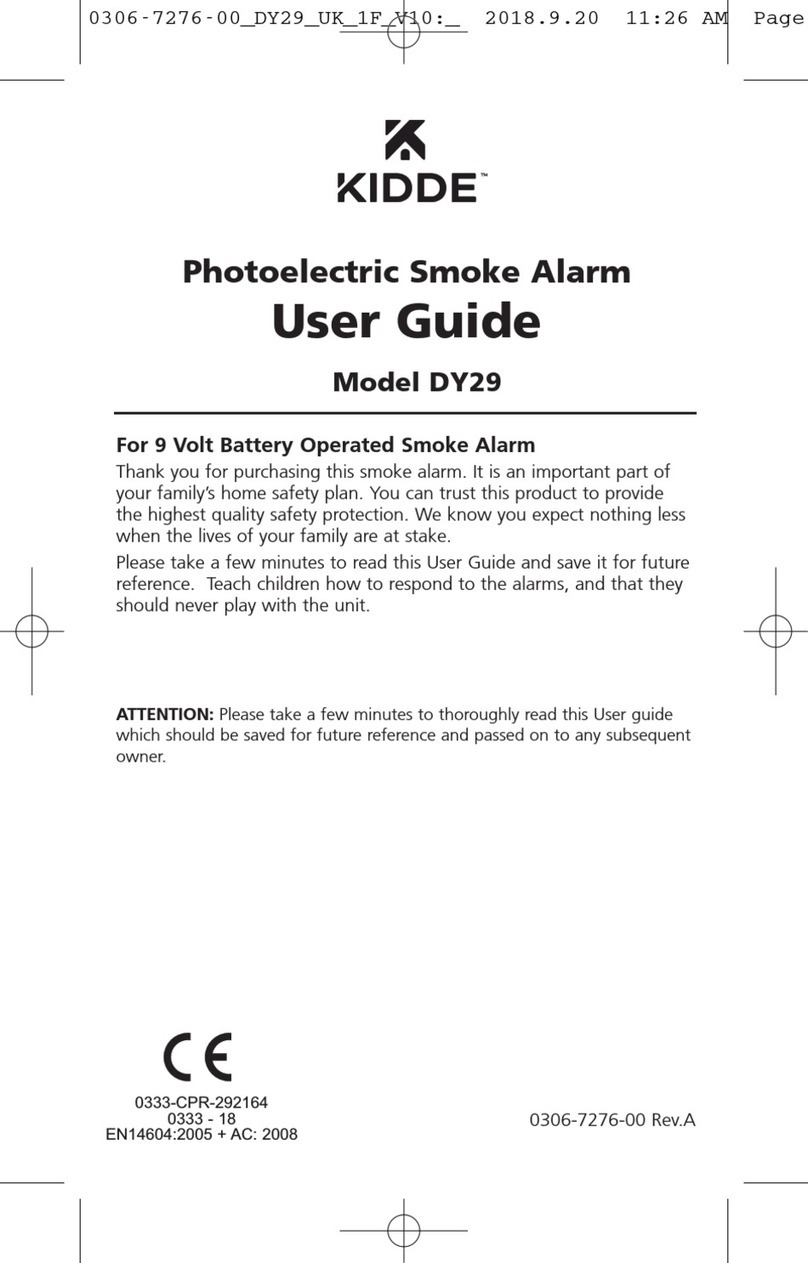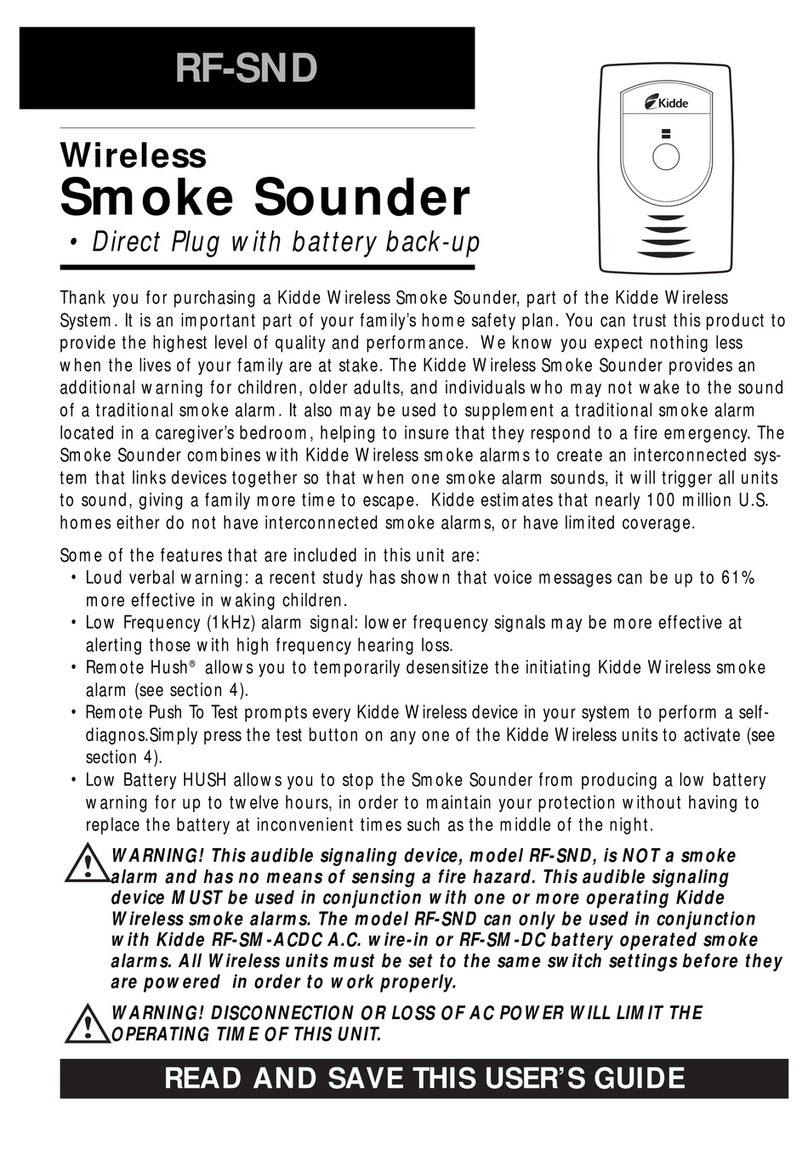Test by pushing the test button on the cover and holding it down
for a minimum of 5 seconds (or until the unit sounds). This will
sound the alarm if the electronic circuitry, horn, and battery are
working. If no alarm sounds, the unit has defective batteries or
other failure. DO NOT USE AN OPEN FLAME to test your alarm,
you could damage the alarm or ignite combustible materials and
start a fire.
TEST THE ALARM WEEKLY TO ENSURE PROPER OPERATION. Erratic
or low sound coming from your alarm may indicate a defective
alarm, and it should be returned for service (see section 11).
NOTE: WEEKLY TESTING IS REQUIRED.
5. NUISANCE ALARMS
Smoke alarms are designed to minimize nuisance alarms.
Cigarette smoke will not normally set off the alarm, unless the
smoke is blown directly into the alarm. Combustion particles from
cooking may set off the alarm if the alarm is located close to the
cooking area. Large quantities of combustible particles are gener-
ated from spills or when broiling. Using the fan on a range hood
which vents to the outside (non-recirculating type) will also help
remove these combustible products from the kitchen.
If the alarm does sound, check for fires first. If a fire is discovered,
get out and call the fire department. If no fire is present, check to
see if one of the reasons listed in section 2 may have caused the
alarm.
6. MAINTENANCE
BATTERY REPLACEMENT
If tamper resist feature has been used, refer to “REMOVING
ALARM WITH TAMPER RESIST FEATURE ACTIVE” in section 3 for
removal instructions.
To replace the battery, remove the alarm from the mounting plate
by rotating the alarm in the direction of the “OFF” arrow on the
cover (see section 3, figure 7).
This Smoke Alarm is powered by 9 volt battery (carbon Zinc, alka-
line, and Lithium batteries may be used). A fresh battery should
last for one year under normal operating conditions. Alkaline and
Lithium batteries will last longer than carbon Zinc batteries. This
alarm has a low battery monitor circuit which will cause the alarm
